Platelet Rich Plasma
Platelet-Rich Plasma for enhanced Hair Restoration
Platelet Rich Plasma
Platelet-Rich Plasma for enhanced Hair Restoration
Platelet Rich Plasma
Platelet-Rich Plasma for enhanced Hair Restoration
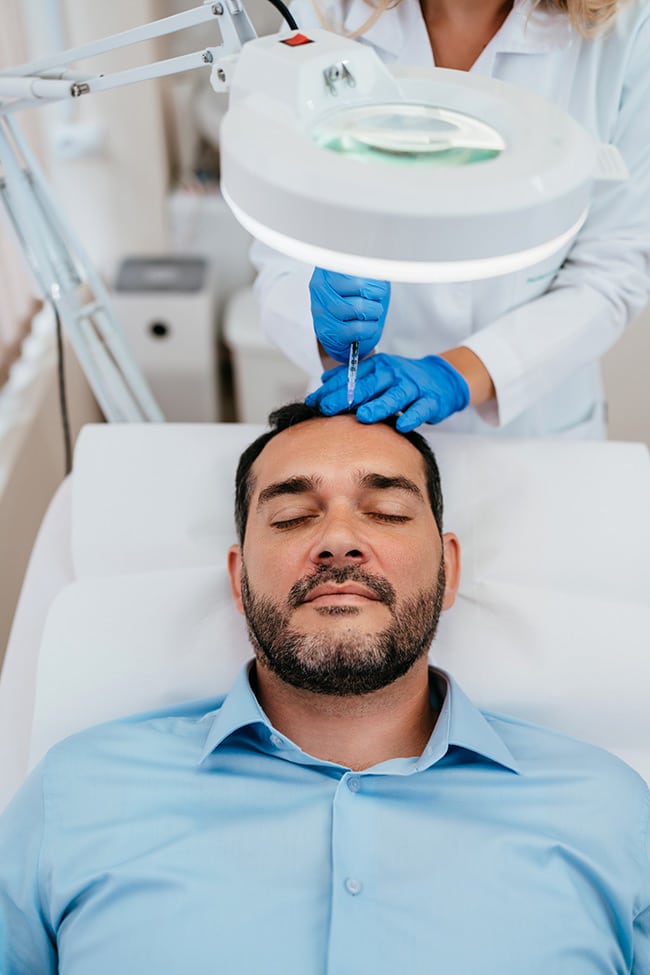
Who Should Utilize Plalelet Rich Plasma For Hair Restoration?
Platelet-rich plasma (PRP) for hair restoration is beneficial for individuals experiencing various types of hair loss or thinning. This includes those with androgenetic alopecia, commonly known as male or female pattern baldness, as well as individuals with conditions like alopecia areata, telogen effluvium, and diffuse hair thinning.
PRP can also be useful for individuals who have undergone hair transplant procedures, as it can promote faster healing, reduce inflammation, and enhance graft survival. Overall, PRP offers a versatile treatment option for improving the density, thickness, and overall health of the hair, making it suitable for a wide range of individuals seeking to address hair loss concerns.
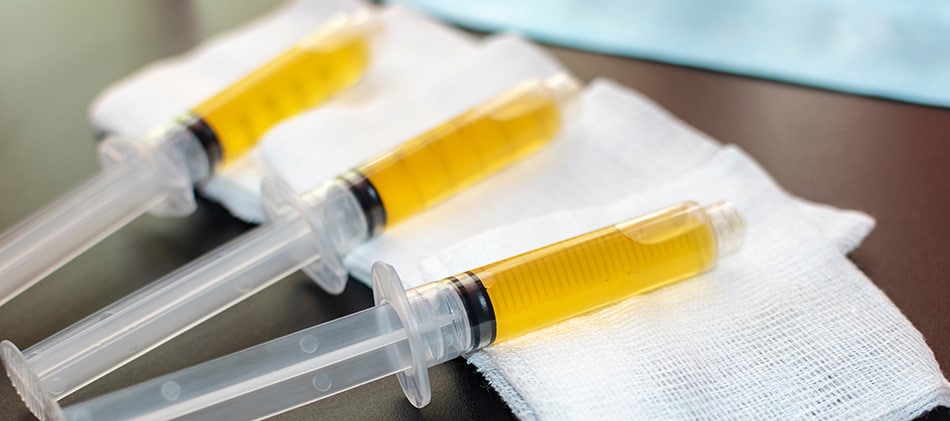

Who Should Utilize Plalelet Rich Plasma For Hair Restoration?
Platelet-rich plasma (PRP) for hair restoration is beneficial for individuals experiencing various types of hair loss or thinning. This includes those with androgenetic alopecia, commonly known as male or female pattern baldness, as well as individuals with conditions like alopecia areata, telogen effluvium, and diffuse hair thinning.
PRP can also be useful for individuals who have undergone hair transplant procedures, as it can promote faster healing, reduce inflammation, and enhance graft survival. Overall, PRP offers a versatile treatment option for improving the density, thickness, and overall health of the hair, making it suitable for a wide range of individuals seeking to address hair loss concerns.
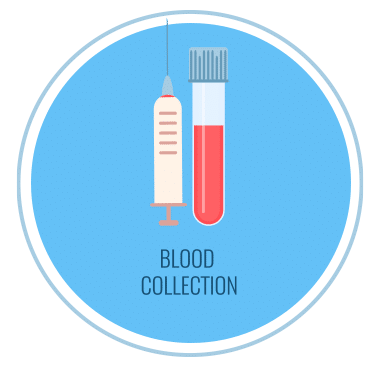
Blood Collection
The first phase involves drawing a small amount of the patient’s blood, usually from the arm, similar to a standard blood draw procedure. The amount of blood collected depends on the specific PRP protocol being used and the treatment area’s size.
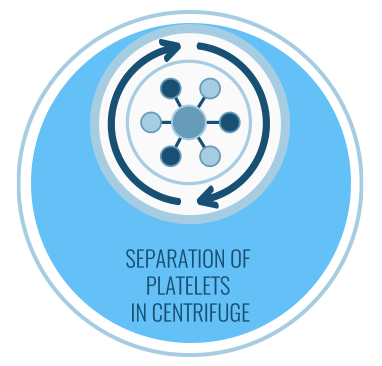
Centrifugation of the Sample
Once the blood is collected, it is placed in a specialized centrifuge machine. The centrifuge spins the blood at high speeds, separating it into its components based on their density. During this process, the platelet-rich plasma (PRP) separates from the other blood components, such as red blood cells and plasma. The PRP layer, which contains a concentrated amount of platelets and growth factors, is then carefully extracted from the centrifuge tube.
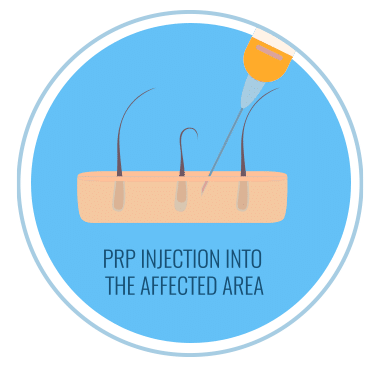
Injection of the PRP
In the final phase, the concentrated PRP is prepared for injection into the treatment area. Before injection, the area is typically cleaned and numbed with a local anesthetic to minimize discomfort. The PRP is then injected directly into the scalp at targeted areas where hair thinning or loss is observed. The platelets and growth factors in the PRP stimulate hair follicles’ activity, promote hair growth, and improve overall scalp health.

Blood Collection
The first phase involves drawing a small amount of the patient’s blood, usually from the arm, similar to a standard blood draw procedure. The amount of blood collected depends on the specific PRP protocol being used and the treatment area’s size.

Centrifugation of the Sample
Once the blood is collected, it is placed in a specialized centrifuge machine. The centrifuge spins the blood at high speeds, separating it into its components based on their density. During this process, the platelet-rich plasma (PRP) separates from the other blood components, such as red blood cells and plasma. The PRP layer, which contains a concentrated amount of platelets and growth factors, is then carefully extracted from the centrifuge tube.

Injection of the PRP
In the final phase, the concentrated PRP is prepared for injection into the treatment area. Before injection, the area is typically cleaned and numbed with a local anesthetic to minimize discomfort. The PRP is then injected directly into the scalp at targeted areas where hair thinning or loss is observed. The platelets and growth factors in the PRP stimulate hair follicles’ activity, promote hair growth, and improve overall scalp health.
What are any important considerations before scheduling your first PRP treatment for hair restoration?
Underlying Cause of Hair Loss:
Understanding the underlying cause of your hair loss is crucial before scheduling PRP treatment. Whether it’s genetic factors, hormonal imbalances, or other conditions like alopecia areata, addressing the root cause can help determine if PRP is the right solution for your specific needs.
Treatment Expectations:
Consider your treatment expectations and goals. While PRP can promote hair growth and improve hair density, it’s essential to have realistic expectations about the results and the time frame in which they may occur. Multiple sessions may be required for optimal outcomes.
Medical History:
Discuss your medical history with your healthcare provider before scheduling PRP treatment. Certain medical conditions or medications may affect your eligibility for PRP or require adjustments to the treatment plan to ensure safety and efficacy.
Consultation with a Specialist:
Schedule a consultation with a qualified healthcare provider specializing in PRP for hair restoration. During the consultation, the provider can assess your hair loss condition, discuss treatment options, and address any questions or concerns you may have.
Cost and Financial Considerations:
Understand the cost of PRP treatment and any associated expenses, such as consultation fees, follow-up visits, and potential additional treatments. Additionally, inquire about financing options available to help manage the cost of treatment.
Recovery and Downtime:
Consider the recovery and downtime associated with PRP treatment. While downtime is typically minimal, some individuals may experience mild redness, swelling, or discomfort at the injection site. Plan accordingly for any necessary time off work or social activities.
Customer Testimonials

Precision Medical’s personalized approach to hair loss treatment exceeded my expectations. I’m thrilled with the results and newfound confidence!
Sarah Thompson, Satisfied Customer

As a man experiencing hair loss, I was hesitant to seek treatment, but Precision Medical’s professionalism and expertise put me at ease. I’m amazed at how natural my hair looks now.
John Parker, Satisfied Customer

Precision Medical’s advanced techniques restored my hair’s thickness and volume, making me feel like myself again. I highly recommend their services.
Paul Baca, Satisfied Customer

I struggled with hair loss for years until I found Precision Medical. Their team’s dedication and skill transformed my appearance and outlook on life.
Anonymous, Satisfied Customer

Precision Medical’s non-surgical hair restoration options were a game-changer for me. I’m grateful for their innovative approach and outstanding results.
Lucas Carter, Satisfied Customer

Precision Medical’s comprehensive care and attention to detail throughout my hair loss treatment journey were exceptional. I’m thrilled with the outcome and newfound confidence.
Jeff Forrester, Satisfied Customer


